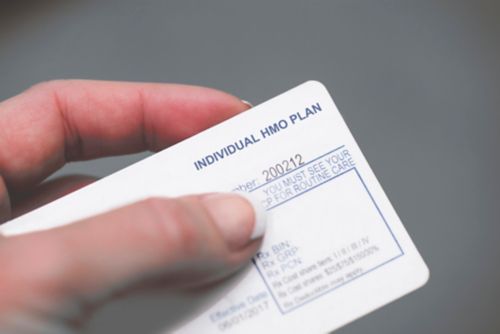Menu
Close
Back
Welcome to
Together is a new resource for anyone affected by pediatric cancer - patients and their parents, family members, and friends.
Learn MoreLearning how to read an insurance card is easier than you think. It’s important, too. Your insurance card can explain how your health insurance works. It can help you understand where to seek care and how much you might have to pay for care.

An insurance card usually shows the name of the person who holds the policy. This may be your name. If you’re a teen or young adult, it might be your parent’s name.
An insurance card usually shows the name of the person who holds the policy. This may be your name. If you’re a teen or young adult, it might be your parent’s name.
All health insurance cards should have a policy number. It’s usually called “Policy ID” or “Policy #” on your card. Your insurance company uses this number to keep track of your medical bills. You might be asked for this number when you schedule an appointment with a provider.
If you have health insurance through work, your insurance card probably has a group plan number. The insurance company uses this number to identify your employer’s health insurance policy. Not all insurance cards have a group plan number.
If you turn over your insurance card and look at the back, you will likely find contact information for your insurance company. This might include:
This information is helpful if you need to contact your insurance company. They can help you:
This information helps you understand how much you might have to pay for certain types of care.
The “coverage amount” tells you how much of your treatment costs the insurance company will pay. This information might be on the front of your insurance card and is listed by percent.
You might see several percent amounts listed together. For example, if you see 4 different percent amounts, they could be for:
If you aren’t sure or have questions about what the percentages mean, check your plan materials, or call your insurance company.
You might see another list with 2 different percent amounts.
The first one is how much the insurance company pays providers who are in-network for your plan. Your insurance company has an agreement with these providers.
The second percent amount is the amount your insurance company pays providers who are out-of-network. Your insurance company does not have an agreement with these providers.
You can still get treatment from out-of-network providers. But you will have to pay them more for your care.
You will have to pay the amount that the insurance company does not cover. Call your insurance company if you are not sure if your provider is in network.
You will see dollar amounts on your card, too. This is usually the amount of your co-payment, or “co-pay.” A co-pay is a set amount you pay for a certain type of care or medicine.
If you see several dollar amounts, they might be for different types of care:
If this information isn’t on your insurance card, call your insurance company. They can let you know details about your plan.
Your health insurance company might pay for some or all the cost of prescription medicines.
Look for an Rx symbol on your health insurance card. Keep in mind that not all cards have this symbol, even if your health insurance pays for prescriptions. Sometimes, the Rx symbol has a dollar or percent amount next to it. Those show how much you or your insurance company will pay for prescriptions.
If you are not sure if your health insurance pays for prescriptions or how much it pays, call your insurance company.
If your health insurance card has a symbol or information you do not understand, call them. They can answer any questions you have.
—
Reviewed: February 2022